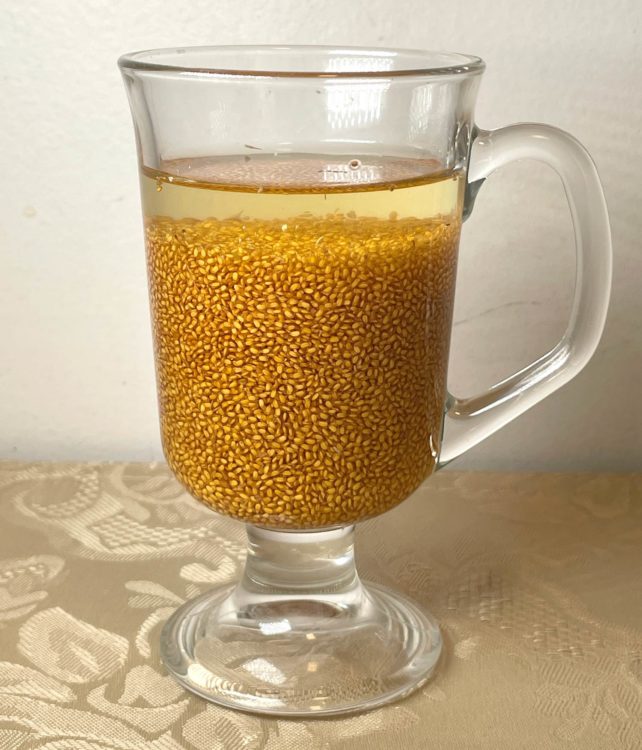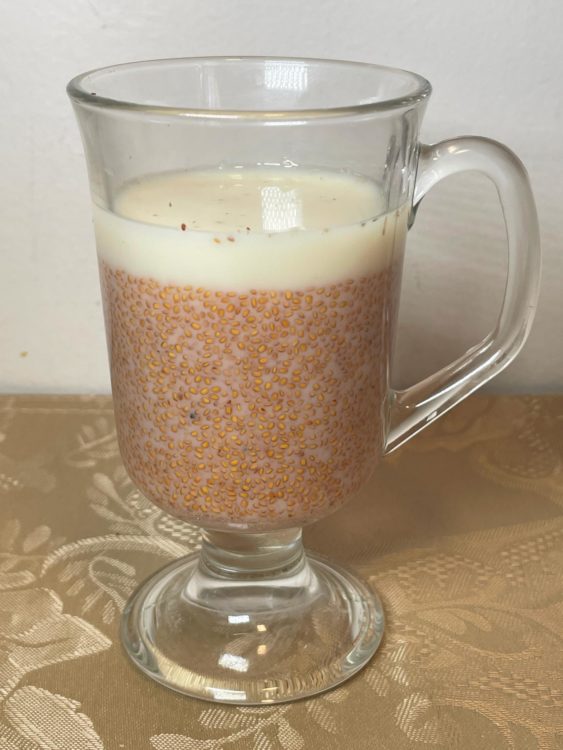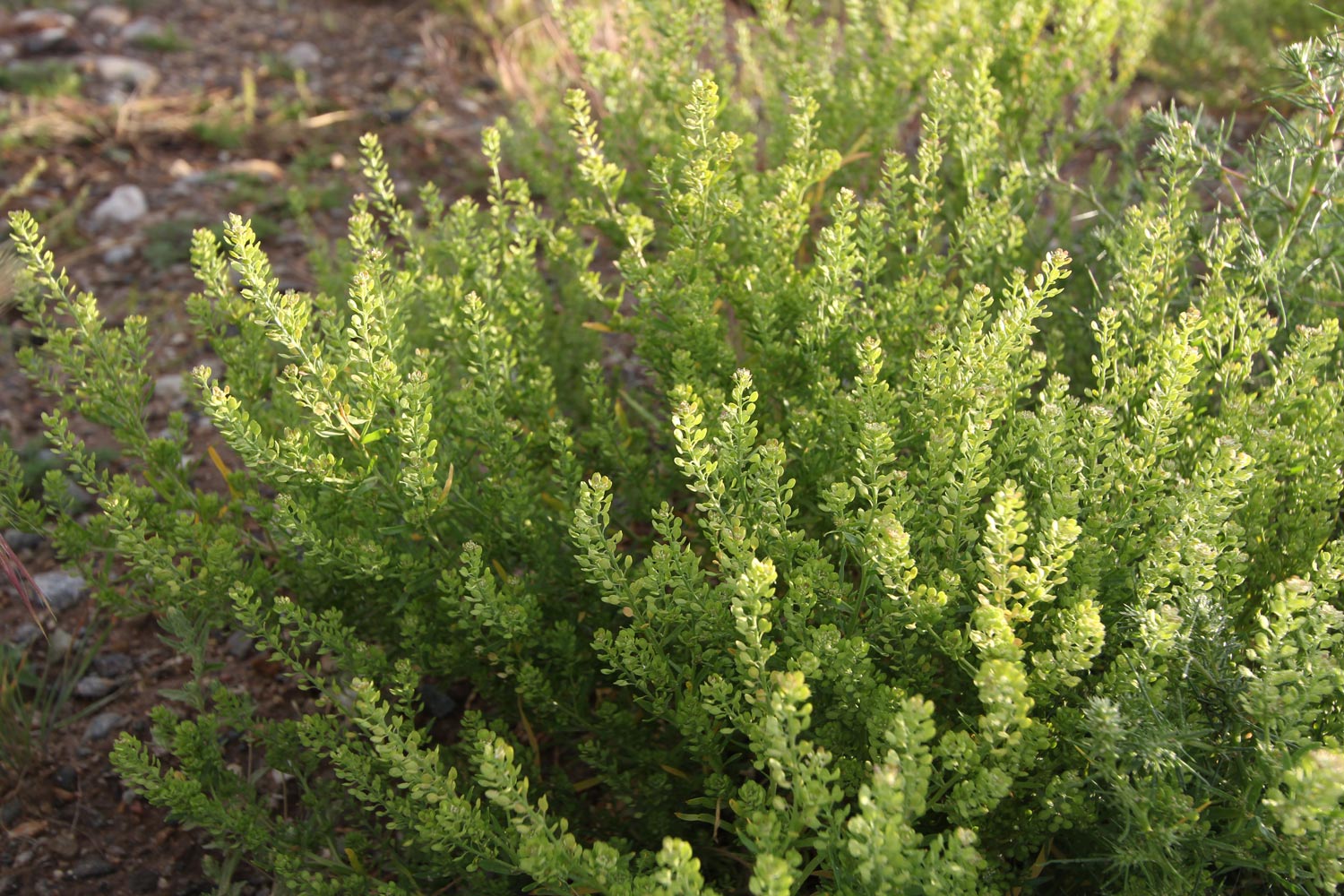 This gorgeous wild seed drink is one of the best things I’ve made in a while!
This gorgeous wild seed drink is one of the best things I’ve made in a while!
I used the seeds of peppergrass, a wild mustard you wouldn’t think you could enjoy like chia seeds. But you can!
There are many species of peppergrass (Lepidum spp.), both native and non-native. I used the native species L. ramosissimum, but they are all worth a try, especially if you can find a productive patch.
In the desert Southwest, first peoples traditionally soaked various seeds in water to make mucilaginous beverages, including both chia and peppergrass seeds. The mucilage produced by the soaked seeds of Lepidium species may slow digestion and absorption, helping to control blood sugar (Hodgson, 2001).
A comparable use is found across the ocean, where Arab people enjoy the “red seeds” of the cultivated garden cress Lepidium sativum soaked, boiled, or ground and served in sweetened milk or custard. Red seeds are considered to have numerous medicinal benefits, in addition to their culinary uses.

The peppergrass seeds I used had a hint of spice to them raw, but soaking eliminated it.
Note that some mustard seeds are too spicy to use for this purpose and might irritate the digestive tract if ingested in quantity. Spicy mustard seeds–like those of field pennycress (Thlaspi arvense)–are better used to make a mustard condiment.
After trying the drink plain, I went a step further, sweetening and lightening it to make my own version of red seed drink. Oh my gosh, it was so good! I gave the husband a few sips before polishing it off and he has been asking for more since.
Below are some instructions for how to harvest and winnow the seeds and then prepare the drink. Or here’s a video that demonstrates the process.
Harvest
Find a productive peppergrass plant or plants. Like all Mustard family members, the peppergrasses have seedpods held in racemes—bottlebrush-like stalks of alternating mini-stalks on which the seedpods are held. Peppergrass seedpods are small (1-3 mm), round to elliptic, and flattened, and they break apart into two halves with tiny orange seeds inside. Peppergrass species are found in every state.

Above is my local peppergrass while still green, in an early stage of seed development. This plant is not yet mature enough for seed harvest. For the drink, one wants to harvest from the tan-colored, dry and brittle seed heads of late summer or fall. If it’s hard to strip manually, it’s not ready! Once it is, strip seeds and their attached seed coats and bits—collectively known as chaff—into a container.
Winnow
A shallow, broad basket with low, sloping sides is best for winnowing—a technique that separates seeds from chaff. Fortunately, this design is common among many indigenous peoples around the world. Mine is made by the Tuareg people of Burkina Faso.

There’s an art to winnowing that takes time to learn, which I am still learning. Things change depending on what seeds you are using and the size and weight of the chaff. In general, however, one wants to make a gentle down-snap and pull-back motion to send the chaff floating into the air over the edge of the basket—for which a windy day is great because it helps carry it off—and catch the seeds, which gradually work their way counterclockwise toward the back of the basket, leaving a trail of lighter chaff in front. Start small or you will lose your seeds!
After the material is at the “pretty darn good” stage, you can clean it more by:
- Strategically blowing around the basket to air-lift out more chaff.
- Sifting through a sifter—in this case, the seeds fall through and chaff mostly stays above.
- Using the “cookie sheet” method, where a slanted, somewhat flexible cookie sheet is held at a gentle angle, so the seeds roll to the base and the chaff stays above. This is repeated many times as you pull the descending chaff-and-seed mix back to the top over and over again, while spooning off the cleaned seeds that collect below.
Or, you don’t have to clean them and you can just use your “pretty darn good” seeds as they are. A bit of peppergrass chaff won’t hurt anyone. It’s edible, it’s just roughage that isn’t food anymore.
Soak
I soaked 2 Tbsp seeds in a small glass (tumbler) of clean water for 1-2 hours, until they were good and soft, mucilaginous, and swollen.
Prepare
Pour off extra water if needed so the drink isn’t too watery. Add nut milk, milk, or condensed milk. Sweeten as desired. Serve.

Leave a Reply